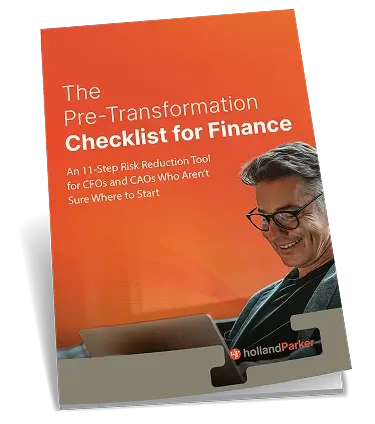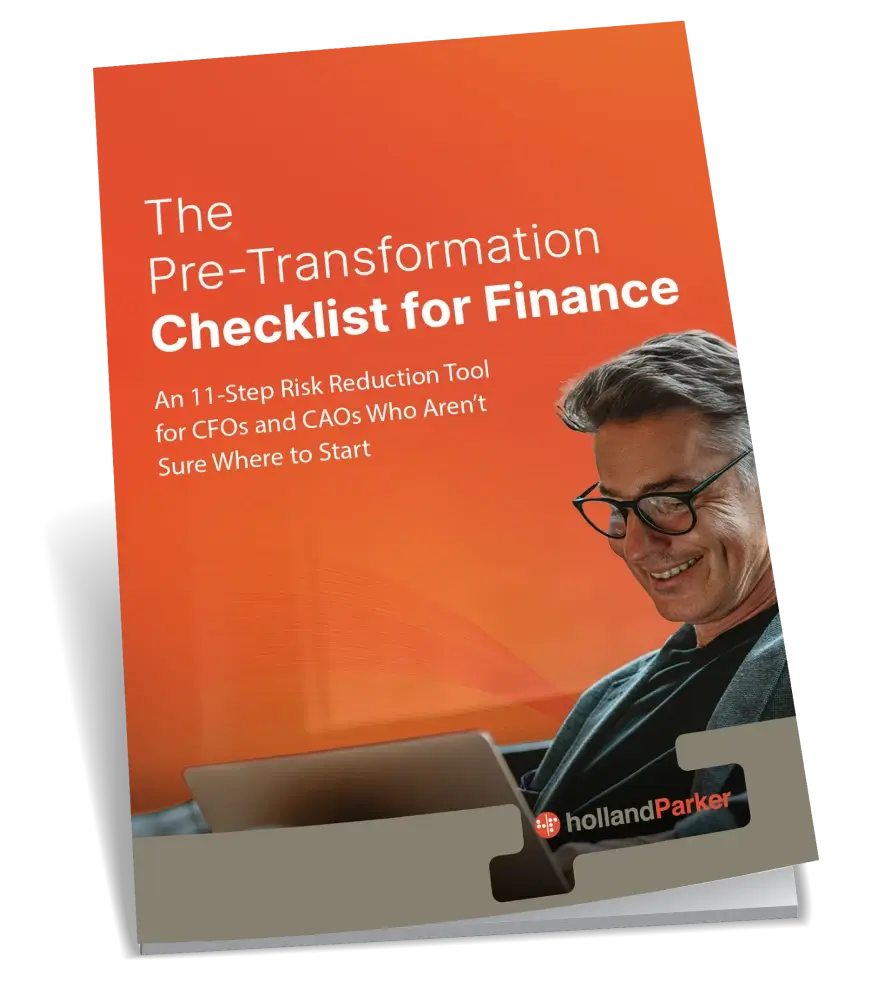How Scrapping the Annual Budget and Using OneStream XF Could Be the Best Decision Your Company Will Ever Make
Oh, the woes of the annual budget. It’s just another necessary evil – one of those things that everybody hates, but we all have to do nonetheless, right?
Actually, no.
Not only is the annual budget in its traditional form not necessary, but it might even be holding your company back.
Times are changing, and in the past decade, business has changed at breakneck speeds.
Companies are updating and upgrading left and right, from their technology, their logo designs and slogans, their hiring practices, and even their core mission just to keep up with the rapid pace of business nowadays. So why are so many of them still using the same budgeting methods since 1970?
How Your Company’s Annual Budget Might Be Holding You Back
It’s too slow. A survey done by the Beyond Budgeting Round Table, which has done countless case studies and extensive research on traditional budgeting practices, found that 55% of companies said the assumptions they used in their annual budgets differed so greatly from their actuals that the budget was rendered useless within the first six months of each year.
Perhaps relegating financial planning to one time of the year was sufficient decades ago, but the business and economic cycles are too short for that now. Things can change overnight, and companies can tank in a matter of months, or even less. The digital age has created a landscape that’s ripe for phenomenal upswings and devastating downfalls that happen in the blink of an eye.
Given the fast pace of business nowadays, it simply does not serve your company to lock in an annual budget and stick to it for an entire year, when the economic landscape could look drastically different just months from now.
It’s not agile. The North America program director for the Beyond Budgeting Round Table, Steve Player, says “The fundamental problem I have with budgets is that they are all based on assumptions that turned out to be wrong. Sometimes the economy comes in stronger, sometimes it comes in weaker. The budget locks everyone into an annual cycle. We need to be moving faster than that, to be more agile.”
When things change, companies must respond fast. It’s the only way to keep up with the ultra-competitive environment of today’s business world. Gone are the days that a company can afford take a few years to figure out how to perfect their budget – by then, they’ll already be out of business.
Furthermore, when actuals inevitably don’t meet targets due to unforeseen circumstances, financial professionals spend way too much time and energy explaining why the actuals don’t match the budget instead of trying to rework and improve the budget. The annual budget forces companies to try and falsely manipulate a set of fixed circumstances throughout the year instead of going back to the drawing table and manipulating what they actually have control over – the budget.
Targets are fixed. This is a huge problem with traditional budgets that greatly slows down companies, creates inefficiency, and doesn’t allow companies to be flexible and adapt.
With a traditional budget, companies typically set fixed targets that are developed by their financial professionals. Even the process of setting these targets as flawed, as it’s rife with a conflict of interest. Financial professionals often get paid for hitting their targets, so of course they want to choose targets they can meet and avoid being overly ambitious.
What’s more, employees are then laser-focused on hitting these somewhat arbitrary targets rather than on simply achieving the best possible outcome. When circumstances arise that make it impossible to hit these targets, they’re not taken into account and the targets still remain the same. Alternatively, when a company is able to come in greatly under budget due to unforeseen circumstances, there is an incentive to spend unnecessarily in order to stick to the planned budget.
Your resources are being wasted. If you’re working on a traditional annual budget, chances are your company spends a lot of time and money on the annual budget, and your skilled financial professionals spend a lot of their energy on it. Some companies spend up to 6 to 8 months, or sometimes even more, simply creating their annual budgets.
Especially during peak budgeting season, your employees are probably overworked and burnt out. Their energy doesn’t get spread out evenly throughout the year. While budgets might be an important tool in theory, their value and effectiveness is simply not enough to justify that kind of time and money commitment.
It’s draining your company culture. The Beyond Budgeting Round Table has said that in all of their research, the primary conclusion they’ve reached is that the culture of budgeting is the biggest roadblock to change, and thus growth and success, for most companies. It’s been shown that traditional budgets create an environment of mistrust, lack of transparency, and corporate lethargy.
How a Rolling Forecast Can Revolutionize Your Company?
The answer isn’t to scrap the budget altogether – few companies would agree on a change so dramatic.
But the answer will require some pretty significant changes: implement a rolling forecast.
A rolling forecast is future-facing, and it makes projections about the future that are frequently and continually updated with changing circumstances. It adapts to change and is assessed on a rolling basis.
So, rather than adopting a fixed budget for an entire year and only assessing and changing it at the end of that year, the budget is created 12 or 18 months out, assessed regularly throughout the year, and new months are added to the budget on a rolling basis. Starting out, a company can transition to a rolling budget on a quarterly basis but eventually, should move to holding monthly meetings where the budget is updated with actuals and reforecast. There are many benefits to this system of budgeting.
It’s fast-paced. Rolling forecasts are updated regularly, so they’re able to keep up with the ever-changing business world. If something drastic changes in the economy, a rolling forecast is able to keep up.
It’s completely agile. The most obvious benefit of a rolling forecast is that it’s flexible and adaptable. It responds actuals on a monthly basis (at least) and thus take economic circumstances into account in a way that a traditional budget can’t.
Additionally, collaboration is encouraged with a rolling budget. Technology updates in real time and cloud-based softwares allow employees to collaborate on the budget creation across departments. When financial, operations, and sales teams all come together to assess the budget regularly, it makes for a more accurate and updated budget.
Targets are relative. Rather than setting fixed targets, targets in a rolling forecast are set in relation to your company’s competition. Not only does this allow your company to measure its performance relative to changing economic circumstances, but it also greatly increases competition.
Your resources are spread out more evenly. Rather than working long days at the end of the year to meet budgets, causing your financial professionals to be burnt out and overworked, a rolling forecast spreads out your employees time more evenly. Responsibility is more evenly spread out as well. Rather than putting off serious budgeting until the end of the year, at which point everyone is scrambling to meet budget, employees are forced to make every month count.
It makes for a future-focused, adaptable corporate culture. Implementing a new budgeting process isn’t just about concrete changes. Perhaps the most important thing a new budgeting method can do for your company is to shift its culture and mindset. A more adaptive budget will make for, well, a more adaptive company…and that is priceless.
How OneStream Facilities an Easy Transition to Rolling Forecasts
The managing director of Accenture Strategy, David Axson, said, “The biggest trend I see is gaining the ability to adapt and react to the volatile environment [of business] with speed and confidence, and the ability to leverage technology to do that.”
A rolling budget can simply not be created and updated using outdated financial tools such as traditional budgeting software and Excel spreadsheets. The key to creating a successful rolling forecast lies in using the proper software and technology to facilitate it.
OneStream is ideal for this task. One of the most important things to do when creating a rolling forecast is to have a software that can consolidate and pre-populate data to save time. This is what OneStream was designed to do. The program will automatically populate rolling forecasts with actuals the moment that the actuals have been certified.
Because it’s designed to help increase the agility and effectiveness of your financial planning, OneStream dynamically updates reports and report books using the most current forecast. This drastically cuts down the time and energy that your financial professionals have to spend generating reports, making it much easier to forecast on a monthly basis.
OneStream also offers the ability to create and assign date ranges, so your rolling forecast is even further automated. Traditional software is built for annual budgets, so it doesn’t incorporate this kind of functionality, but it’s crucial in being able to maintain a budget on a rolling basis.
The importance of collaboration should be obvious by now. Because OneStream offers real-time updates and a cloud-based service called the OneStream XF Cloud, it’s easy for your employees to collaborate across departments.
There’s no doubt that switching over to a rolling forecast will take some additional time and effort for your company and its employees. However, your employees will thank you (and you’ll thank yourself!). The rewards are well worth the work – you’ll see the ROI on transitioning to a rolling forecast is huge.
OneStream is here with you every step of the way to make that transition to a better budgeting system as smooth, easy, fast as possible.








